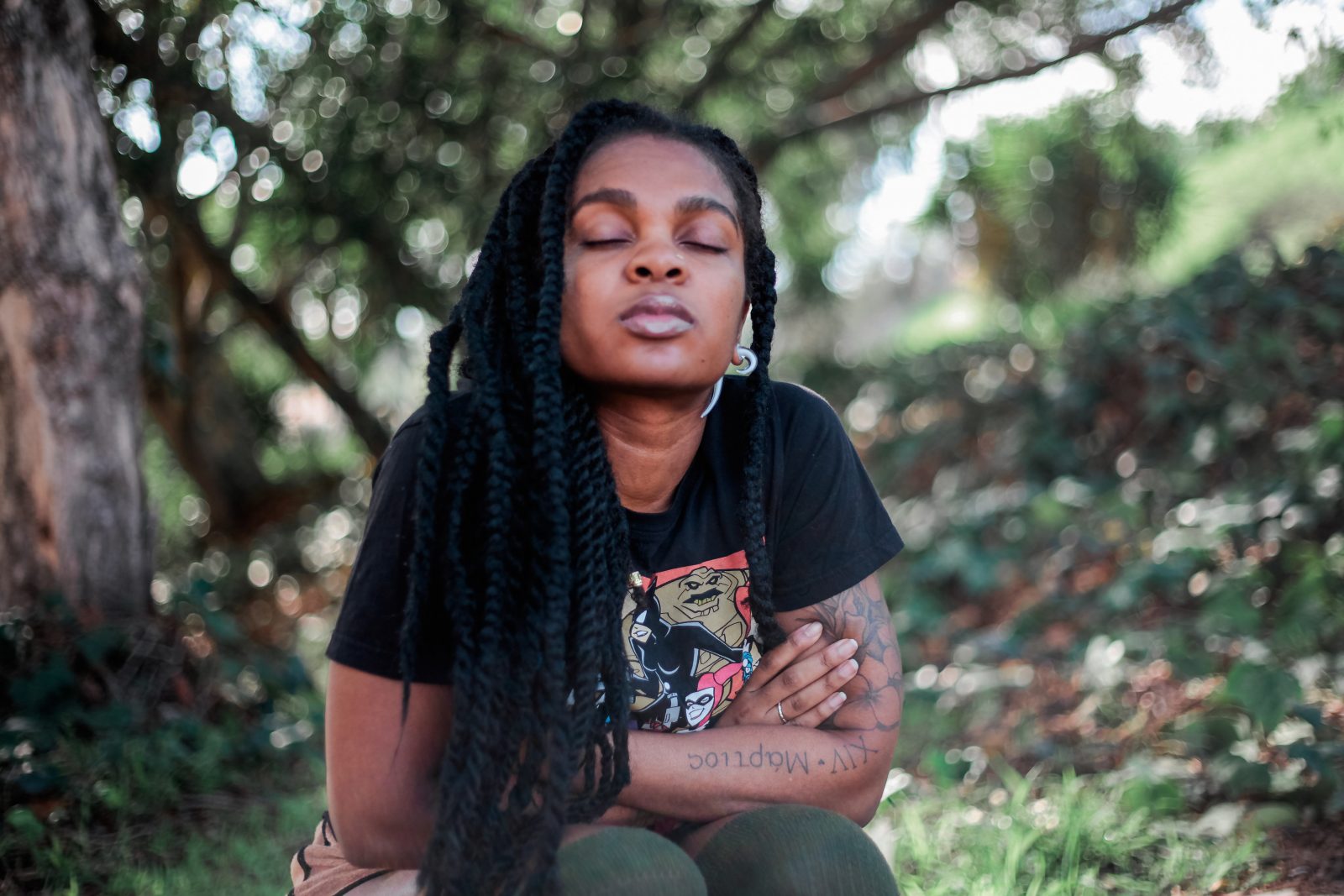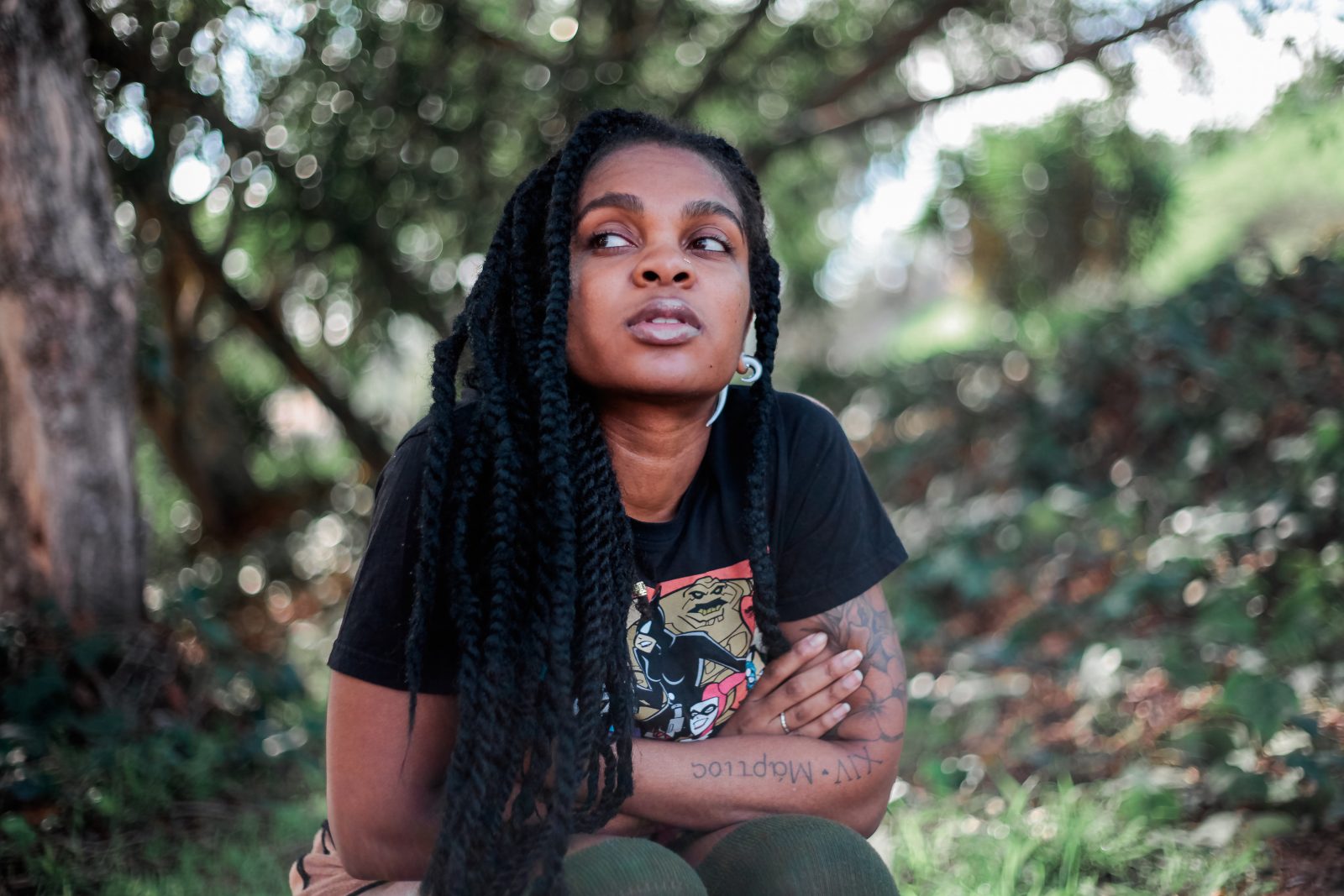Society6 is a community of creatives from all over the world—diversity is what makes us, inspires us and allows us to see the world through others’ eyes.
We believe in celebrating this diversity every day, but we’re also thrilled to participate in the observance of Black History Month by sharing stories of outstanding black creatives. Over the next few weeks, get inspired as LA gallerist Maceo Paisley interviews four different artists, makers and community-shapers. This week is self-taught artist Adele Supreme whose work explores erotic, beautiful yet often disturbing subject matter.
You made a name for yourself with a signature line work style, how did that come to be?
The line work was therapeutic. I was going through a tumultuous time in my life’s few years back so during my leisure I would purchase strips of wood from yard sales and Goodwill, and I would sit on my couch and while I was binge watching a TV series I would freestyle. It started with making random lines, almost everyday, then I went from wood to paper. Random labyrinths became a little monotonous, so I thought to make an image out of it. The first image I made was of a man and a woman spooning, and I thought “I think I have something here!” The rest is history.

Where did the subject matter come from? What fascinates you about relationships?
I would say that the eroticism came about because the tumultuous situation I was in involved a lot of eroticism. It also wasn’t always sex related, I would do portraits of myself and others but I saw how the eroticism captured people’s attentions. What changed my perspective was the shootings in Paris, and there were also all these police killings [of black men] and they were all happening at the same time. There was a week where that was heavily saturated in injustice and hatred, I was so overwhelmed. In that, my knee jerk reaction was to go to Facebook and a friend of mine said, that’s what most people do I, try being stealth. So I began to incorporate symbolism relating to that in my artwork. I knew to get people’s attention, sex sells. I knew if I drew something really raunchy it would capture people’s attention, and the longer they stare they would question what they saw to find deeper meaning.
The style of my work started to evolve but the purpose behind my work started to evolve as well. A lot of my work did begin to be about sexual liberation and sexuality. I did a large installation in Chicago and Los Angeles. In Chicago, the owner of the gallery said I could to whatever I wanted. I was so overwhelmed with excitement. I did three murals and ten canvas and each piece had several layers of meaning.
A lot of people are doubling down on their identity narrative now. It seems like, you are black, but your work isn’t about being black. Tell me how you differentiate yourself from that viewpoint.
Race isn’t in the forefront of my thinking, but one thing I do think about is choosing to take on the responsibility of being a black woman who has been given a platform to say something. Understanding that there is a larger demographic of black women that are watching me, I don’t take that for granted. I don’t consider myself a black artist. I am an artist, that happens to be black.
I think that what speaks volumes is that when someone can see an entire body of work that has so much diversity and texture and then see me and how brown I am and how nappy my hair is, that in itself should be empowering. Just knowing I am black alone and that I am able to do this, should be empowering.

When you think of your perspective, what are you communicating, where does it come from? Is there a broader message?
When I was younger I went through a phase when I felt like I was going to change the world through art work, but that’s not up to me. That’s not my decision, it’s the world’s decision. There is a rawness though, that came about when my mother passed away. I made a vow, as a mortal being that has limited time on earth, to never ever temper any part of my humanity for anyone else, and that’s what’s in my work. I am conscious of that when I create something. I think my supporters follow me as heavily as they do because they see the vulnerability and the authenticity in my work.
“I made a vow, as a mortal being that has limited time on earth, to never ever temper any part of my humanity for anyone else, and that’s what’s in my work. “
Do you ever get any pushback from that?
All the time! Something that I am always reminded of, is that the people that are watching me the closest, happen to be black. They have imposed so much responsibility on me to be representative of them. So yes I get push back all the time. When I first started doing erotic work, people were calling me all kinds of names. People were seeing ME in my work and assuming that the things that were depicted in my work, were things I was doing. It’s too easy to slip into the realm of people pleasing. But for some people, if they don’t like my work, they need to look away.
One thing I have learned to take pleasure in is observing the conversations and debates that my work creates, because it becomes a part of the piece. I am so fascinated by human psychology, it is so interesting to see what ink on paper can arouse in the mind. I can make a piece that is intended to make people laugh, but the moment I put it out it can start a bunch of backlash. It’s like I hand the audience a ball of clay, and some people decide to make the clay into a gun, let’s have a conversation about why you chose to make a weapon, not about what I used to make the clay. So I have to be willing to surrender the work to the public, and admit it is not my own.

Comments